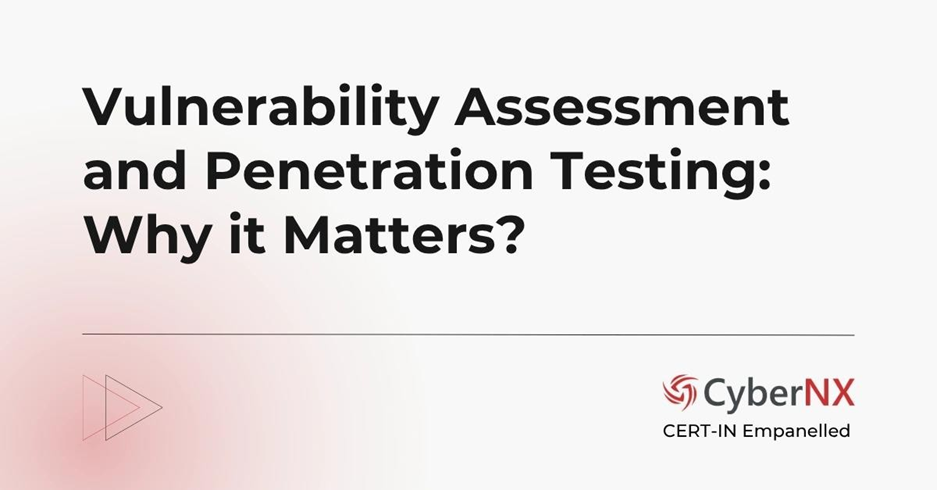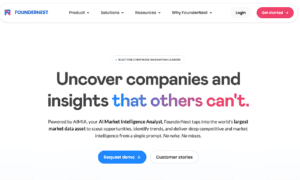We are only midway through the year, and the flood of new software vulnerabilities shows no sign of slowing down. Security gaps and fresh weaknesses are surfacing constantly, each one a potential doorway for cybercriminals to sneak into your systems. It is indeed a stark reminder that reactive security is not enough anymore.
A recent study revealed that manual pentesting uncovered more unique vulnerabilities compared to automated scans alone. The study claimed that the cost of ignoring such blind spots could have resulted in over 2 billion dollars in potential losses.
What saved these businesses? Vulnerability Assessment and Penetration Testing, combining automation with human expertise. The message that goes out is loud and clear: you should proactively safeguard your digital infrastructure. In this quest, CyberNX, a leading and trusted VAPT service provider can help your business with its advanced technology capabilities, certified professionals and experience of working with domestic and international clients.
What is Vulnerability Assessment and Penetration Testing (VAPT)?
Before you understand what Vulnerability Assessment and Penetration Testing is, you must know what a vulnerability is. Mistakes or errors can creep into the coding process, which is the foundation for building software. These are generally known as bugs, and they could cause software performance issues. However, when these bugs are exploited by cyber attackers, they are regarded as vulnerabilities.
Now keeping this in mind, Vulnerability Assessment and Penetration Testing (VAPT) should be understood as a critical early step in a proactive security strategy for a business. Once you have done risk assessment, established security policies and put in place controls, VAPT is used to find weak spots, test effectiveness, simulate real world attacks and prioritize remediation measures.
Vulnerability assessment acts as a foundational process where it scans the system for known vulnerabilities and misconfigurations in your systems. Penetration testing, as an extension of the process simulates real cyberattacks to validate the found vulnerabilities and explore the potential impact.
Now why do Vulnerability Assessment and Penetration Testing matter?
VAPT helps in prioritizing an actionable roadmap to fix security gaps before malicious actors can find and exploit them.
As far as businesses across the world are concerned, there is a surge in the demand for VAPT services. Modern enterprises are embracing digital transformation and using critical infrastructure for business operations, thus driving the demand for advanced security testing. But the reality is that there is a worldwide shortage of cybersecurity professionals.
Therefore, businesses are partnering with VAPT service providers to protect themselves from reputational damage, regulatory penalties and long-term revenue loss.
Benefits of VAPT That You Should Know
Vulnerability Assessment and Penetration Testing helps organizations identify, validate and fix security weaknesses before cyber criminals can, enabling you to build strong defences, achieve compliance objectives and maintain brand reputation (highly important today for successful businesses).
1. Find Hidden Threats
VAPT does surface-level scanning and goes beyond by simulating real attacks, systematically identifying critical vulnerabilities that may go unnoticed or undetected.
2. Build Customer Confidence
Continuous testing shows clients and partners that your security strategy is proactive, and that no vulnerability can evade detection, thus strengthening trust and reinforcing your brand’s credibility.
3. Going Beyond Automation
Tools may rely solely on predefined signatures. But VAPT blends automated scans with an additional layer of human intelligence or manual techniques to catch complex, real- world exploits.
4. Test Your Defences
VAPT helps your organization evaluate your security controls like firewalls and monitoring systems, making sure they perform effectively under active threat conditions.
5. Improve Compliance with Purpose
Rather than ticking boxes, VAPT supports meaningful compliance by helping you fix actual risks tied to data protection standards and regulations.
The Hidden Hurdles: Common VAPT Challenges in 2025
The evolving modern threats, the growing enterprise environments and regulatory demands combine to throw some common VAPT challenges. They are discussed below:
1. Over-Reliance on Automation
Automated scanners are fast. But at the same time, they are also generic in the sense that they often miss context-specific or chained vulnerabilities. As a result, human expertise is required to interpret alerts related to vulnerabilities found.
2. Compliance vs. Security Mindset
Compliance is important and most often mandatory. But businesses miss the mark by treating VAPT as a checkbox activity for audits alone. Instead, it should be taken seriously and seen as an ongoing effort to reduce real world risk.
3. Fragmented Infrastructure
Companies now use hybrid cloud setups, legacy systems and third-party integrations for better operational performance. However, it also expands attack surfaces for cyber attackers to exploit, making the testing process harder.
4. Limited Internal Expertise
Without security teams, organizations often struggle to understand or interpret VAPT reports and results. This, in turn, causes delays in patching critical issues or fixing them properly. As a result, it completely defeats the purpose of testing.
5. Reporting Disconnects
Poor vulnerability reports are a recurring issue. Many VAPT service providers do not provide valuable remediation guidance, risk context or business impact, making it difficult for security leaders to take appropriate actions.
Cybersecurity is now a serious matter even for the government. CERT-In, India’s national cybersecurity authority, now places a greater emphasis on manual penetration testing and better report quality. As for organizations, they are expected to discover vulnerabilities plus prove they are being addressed effectively.
Why CERT-In Empanelment Should Be a Dealbreaker
Choosing a CERT-In empanelled partner is about credibility. You can trust such VAPT service providers. CERT-In audits and approves security vendors based on strict evaluation of technical capability, process maturity and past performance.
Working with an empanelled auditor like makes sure:
- Recognized Testing Methodology: Your organization receive assessments that meet both government and industry benchmarks.
- Report Acceptance Across Sectors: If you are into fintech, banks or service providers who must submit audit reports to regulators, CERT-In VAPT companies should be your choice.
- Higher Trust Quotient: In addition, CERT-In empanelled acts as a signal to clients, partners and stakeholders that security is independently validated, in an otherwise noisy environment.
How CyberNX Bridges the Gaps in VAPT
CyberNX’s unique approach towards Vulnerability Assessment and Penetration Testing – VAPT can be summarised as the one that focuses on relevance, context and continuous protection. In effect, keeping up with the modern cyber attackers.
CyberNX is a CERT-In Empanelled Security Auditor, and thus the assessments are fully compliant with national cybersecurity standards. That itself boosts the confidence of our clients across sectors.
Going beyond regulatory checkmarks, the real game-changer is how the team tackles VAPT challenges head-on:
1. Manual s Automated Vulnerability Assessment and Penetration Testing
A hybrid approach is followed to point out and rectify both known vulnerabilities and subtle logic flaws that tools might miss to detect.
2. Business-aware Reporting
Maximum effort is taken to tailor the report as per the needs of client’s risk environment, showcasing severity rankings, threat models and clear remediation plans.
3. Post-Test Remediation Support
The team do not stop at reporting. If your company requires, experts work with in-house security teams to guide patching, validate fixes and prevent reoccurrence.
4. Proven Frameworks
The team always follows industry-standard methodologies like OWASP, PTES and NIST and also adapts them to sector-specific needs. As you can see, CyberNX’s comprehensive VAPT services fortifies your business from modern threats and offer long-term resilience.
How CyberNX Empowers High-Risk Industries with VAPT
CyberNX delivers Vulnerability Assessment and Penetration Testing (VAPT) solutions to high-risk industries. For BFSI and fintech firms, the team has the experience of safeguarding financial data and digital transactions from phishing, account takeovers and API-level threats.
In healthcare and pharma, our VAPT services ensures HIPAA compliance while securing sensitive patient records and connected devices. Same is the case with Retail and e- commerce clients and Manufacturers and industrial sectors. They trust CyberNX to find and fix vulnerabilities plus mitigate risks. With domain-specific expertise, we help organizations with compliance and build cyber resilience where it matters most.
Conclusion
In the digital era, vulnerabilities are multiplying and multiplying at a fast pace. As a modern business, you should not play catch-up. Vulnerability Assessment and Penetration Testing perfectly fits the security strategy if you are aiming for business continuity without risks.
By choosing the right testing partner like CyberNX with CERT-In credentials, real world expertise of helping national and international clients, and deep sectoral focus, your organization can build cyber defence confidently.
Apart from VAPT, CyberNX offers a comprehensive range of cyber security services, from managed detection and response, application security and red teaming to managed cloud services, GRC and more. Want to know how we can transform the security posture of your organization, contact us today.
Vulnerability Assessment and Penetration Testing FAQs
How often should an organization perform Vulnerability Assessment and Penetration Testing?
The ideal frequency depends on your industry, compliance requirements, and how often your systems change. However, most experts recommend conducting VAPT at least once a year or after any major infrastructure, application, or code update.
Can VAPT cause downtime or disrupt services?
When properly scoped and executed by professionals, VAPT is designed to minimize any impact on operations. Penetration testing can be scheduled during low-traffic hours, and vulnerability assessments are usually non-intrusive.
What is the difference between internal and external VAPT?
External VAPT focuses on systems exposed to the internet, like websites and APIs, while internal VAPT simulates an attacker with access to the internal network, uncovering risks that could be exploited post-breach or by insiders.
Is Vulnerability Assessment and Penetration Testing useful for cloud- based environments?
Yes, VAPT is crucial for cloud infrastructures. It helps uncover misconfigurations, insecure interfaces, and other risks unique to multi-tenant cloud setups that traditional security audits may overlook.































